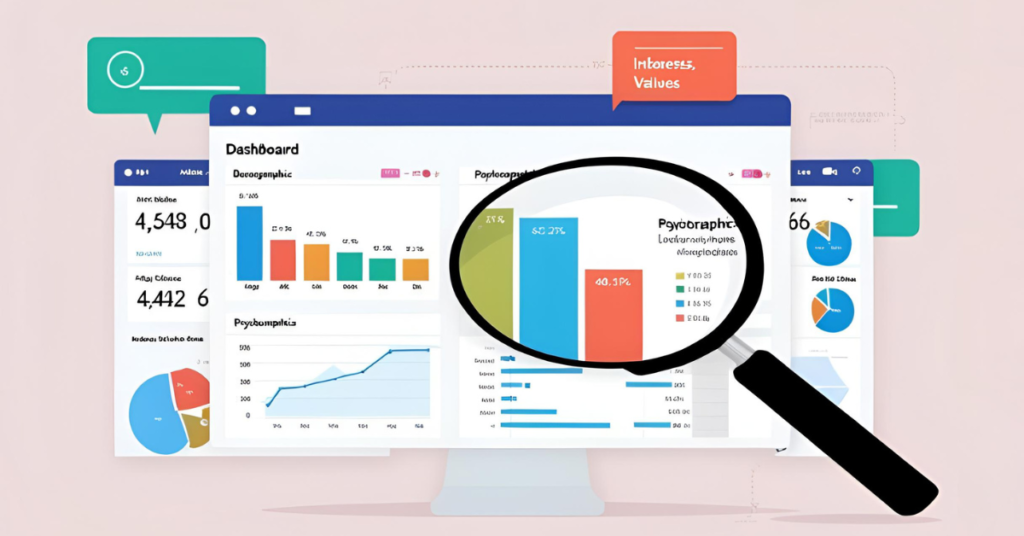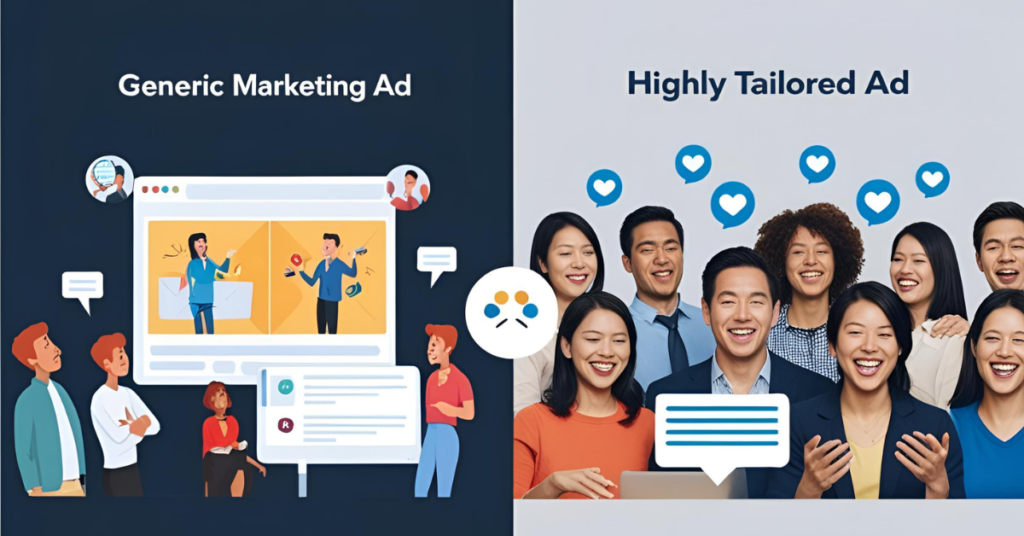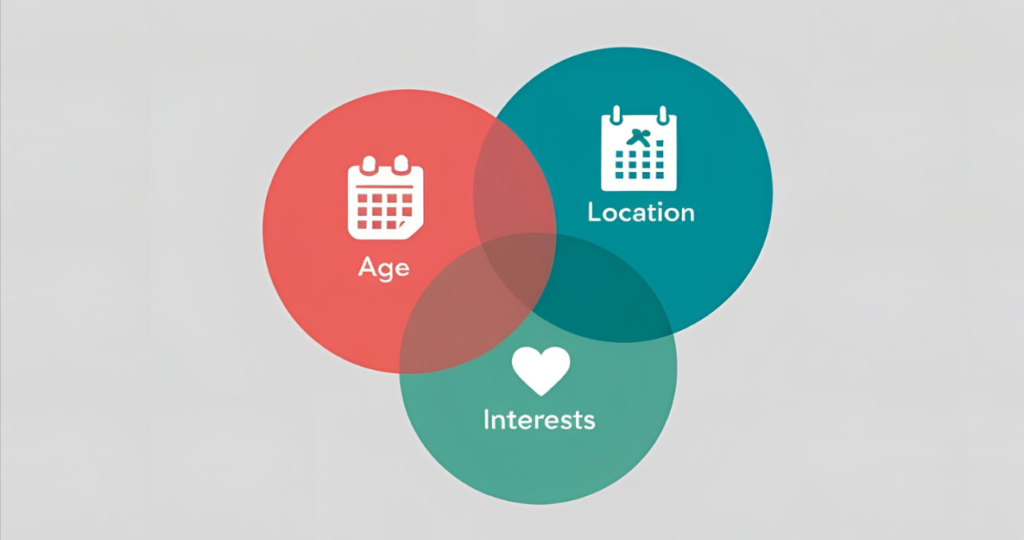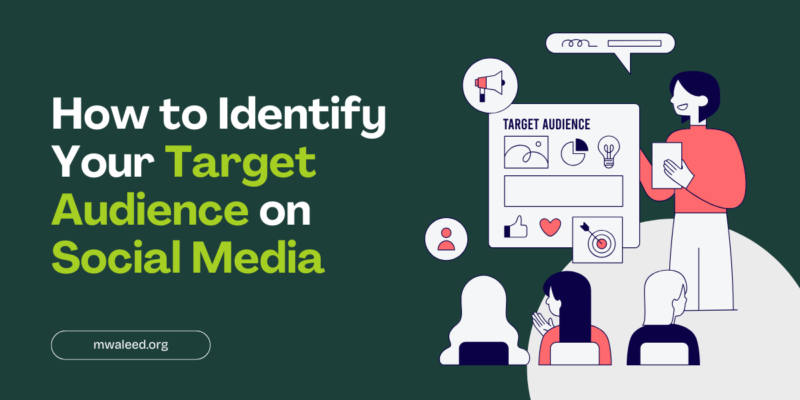Step-by-Step Guide to Identifying Your Target Audience on Social Media
Identifying your target audience on social media is crucial for non profit organizations and Islamic Centers seeking to optimize their marketing strategies. By focusing on specific demographics, interests, values, and behavior patterns, you can craft messages that resonate deeply with your audience. This targeted approach strengthens connections with current followers and attracts new ones, ensuring that your content aligns with audience preferences. With ineffective campaigns costing marketing teams billions annually, understanding your audience is essential to achieving your goals.
Here’s how to effectively define your target audience on social media.
Steps to Define Your Target Audience on Social Media
-
Gather Data:
Use tools like Google Analytics, Facebook Insights, and Twitter Analytics to collect data about your audience’s demographics, behaviors, and interests. Surveys and polls also provide valuable insights. -
Create Detailed Personas:
Segment your audience based on age, gender, income, and psychographics like values and interests. For example, Non Profit Organizations and Islamic Centers focusing on community service might target individuals interested in charity or faith-based initiatives. -
Analyze Engagement Metrics:
Track metrics such as clicks, likes, shares, and comments to understand what content resonates most with your audience. -
Refine Messaging:
Use the insights gained to tailor your messages to specific audience segments. Personalization is key, as studies show 80% of customers prefer buying from brands that personalize their experiences. -
Iterate Based on Feedback:
Continuously refine your approach using feedback and updated analytics to stay aligned with audience preferences.

What is a Target Audience and Why Does It Matter?
A target audience is the specific group of people most likely to engage with your content, product, or service. Understanding this group is the foundation of any successful marketing strategy.
- Increased Engagement: Tailoring messages to a defined audience ensures higher engagement rates. For instance, not everyone will resonate equally with Islamic Center content; focusing on those with shared values is more impactful.
- Efficiency: Knowing your audience simplifies content creation and ensures marketing resources are not wasted on indifferent segments.
- Cost-Effectiveness: For non-profits, targeting the right audience maximizes the return on limited budgets, ensuring every dollar contributes to meaningful engagement.

Define Your Mission Statement
A clear mission statement helps Islamic Centers and Non Profit Organizations communicate their purpose effectively on social media. Follow these steps to craft one:
-
Identify Your Core Purpose:
Reflect on why your organization exists and the problems it aims to solve. -
Pinpoint Your Audience:
Specify who benefits from your services—local families, global communities, or like-minded organizations. -
Highlight Key Activities:
Clearly define programs and initiatives that set your organization apart, such as youth education programs or interfaith events. -
Keep It Concise:
Write a 1–2 sentence mission statement using active language (e.g., “fostering,” “empowering”) to convey purpose and action.
To further enhance your understanding of target audience strategies, explore the services offered at mwaleed.org, where we help Non Profit Organizations develop tailored social media plans aligned with their unique missions
Social Media Platforms and Their Ideal Audiences
Different platforms cater to diverse audiences. Understanding this helps optimize your social media strategy.
| Platform | Ideal Audience | Content Type |
|---|---|---|
| Adults aged 30–50 | News, community updates | |
| Millennials, Gen Z | Visual content, stories | |
| Professionals, business owners | Articles, industry updates | |
| TikTok | Gen Z, younger Millennials | Short, creative videos |
Tailor your content to each platform’s audience for maximum impact.

Monitor Competitor Audiences
Analyzing competitors provides insights into effective strategies:
- Use Tools: Platforms like Sprout Social and Phlanx can reveal competitor engagement metrics.
- Track Hashtags: Monitor popular hashtags used by competitors to discover trending topics.
- Analyze Audience Interactions: Focus on comments and shares to identify what drives engagement.
These strategies help refine your approach and differentiate your offerings.
Segment Your Audience by Demographics
Demographic segmentation ensures your content reaches the right people.
- Age and Location: Customize messages for different age groups and geographic areas.
- Gender Identity and Marital Status: Address specific needs based on life stages and perspectives.
- Tech Usage: Focus on the platforms your audience uses most frequently. For instance, younger demographics might prefer TikTok, while older generations lean toward Facebook.

Tailor Content to Audience Interests
To capture your audience’s attention:
Focus on Relevant Topics:
Use tools like BuzzSumo to identify trending topics and adapt them for your audience.Leverage Audience Feedback:
Respond to questions and concerns raised in comments or surveys.Optimize for Mobile:
Ensure all content is mobile-friendly, as 71% of users access social media via mobile devices.
Research Hashtags and Topics
Effective use of hashtags improves visibility:
- Use Specific Hashtags: For example, Islamic Centers can use hashtags like #FaithCommunity or #CharityEvents.
- Track Trending Topics: Social listening tools like Keyhole can identify trending conversations in your niche.
These strategies help connect with engaged and relevant audiences.
Common Mistakes to Avoid in Audience Targeting
- Ignoring Data: Failing to analyze audience behavior leads to ineffective campaigns.
- Overlooking Niche Audiences: Broad targeting dilutes the impact. Focus on specific groups for better results.
- Inconsistent Content: Ensure your messaging aligns with your mission statement and audience preferences.

Conclusion
Identifying and understanding your target audience on social media is the cornerstone of successful marketing for Non Profit Organizations and Islamic Centers. By focusing on data-driven insights, personalized content, and strategic platform use, you can connect meaningfully with your audience, drive engagement, and achieve your organizational goals.
Frequently asked questions (FAQ)
How can Islamic Centers & Non Profit Organizations improve social media engagement?
By using targeted posts, analyzing engagement metrics, and tailoring content to audience preferences.
What tools are best for audience analysis?
Tools like Google Analytics, Sprout Social, and BuzzSumo are excellent for gathering audience insights.
Why is segmentation important for non-profits?
Segmentation ensures marketing efforts are focused on individuals most likely to support your cause, maximizing efficiency.
How can non-profits use hashtags effectively?
Research relevant hashtags and monitor trending topics to increase visibility and engagement.
What’s the role of competitor analysis in audience targeting?
Competitor analysis reveals successful strategies, helping refine your approach.




